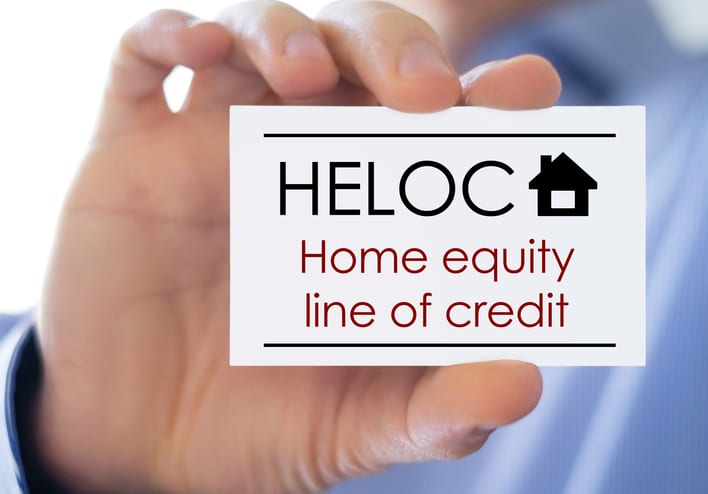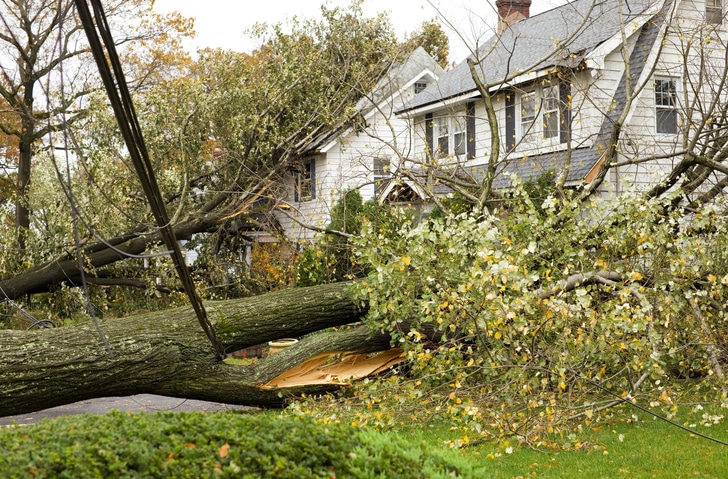Depending on the circumstance, a home equity line of credit (HELOC) could be a good option for you. A HELOC is a revolving credit loan that allows you to borrow against the equity in your home. There are several different uses for a HELOC and various pros and cons to utilizing one. Read on to learn more.
What is a HELOC?
A HELOC is a variable rate line of credit against your home. This type of loan allows you to borrow, use, and repay funds over a specific period of time. Typically, you can borrow 80% to 85% of your loan to value ratio (LTV). LTV is the percentage of your home’s appraised value that is borrowed. Below is an example of how this would work.
Home Value: $1,000,000
Loan to Value Ratio Limit (up to 80%): $800,000
First Mortgage Principal Balance: $500,000
Potential HELOC Borrowing Capability: $300,000
*Please note the above calculation varies and is used above strictly to provide an example.
There are several key things to know about a HELOC:
- You can open a HELOC with a zero balance, simply giving you the flexibility of borrowing if needed. Payments only commence when you draw an amount on the HELOC.
- Example 1: You have a $300,000 HELOC available to you, but you have not drawn out any funds against the HELOC limit. There are no payments required as you have a zero loan balance.
- Example 2: You have a $300,000 HELOC available to you and you have drawn $100,000 against the HELOC limit. You must now make payments based upon the $100,000 loan balance.
- The majority of HELOCs use a variable interest rate, meaning the interest rate on your loan can move up or down throughout the draw period.
- Some lenders do offer fixed rate HELOCs, however the rates are often higher than current variable rates.
- Typically, HELOCs stay open for a period of 10 years. This means you can draw funds from the open line of credit at any point throughout this period.
- During the draw period, the borrower is only required to make interest payments. However, borrowers have the option to pay back the principal as well.
- After the draw period, you enter a repayment period, which typically ranges between 10 and 20 years. These repayments require principal and interest to be paid back.
- HELOCs can be used for almost any expense including a home improvement or renovation, paying for a wedding, and college tuition.
- You will need to work with a lender to obtain a HELOC. To qualify, the borrower generally needs to have at least 15% equity in their home, a solid credit score and steady income.
The Pros and Cons of a HELOC
There are several pros and cons to utilizing a HELOC. Some of the pros include:
- HELOCs typically have a lower interest rate than other types of unsecured loans like credit cards.
- HELOCs provide a lot of flexibility. This includes the ability to open a line credit but not use it at all. This can provide you with a level of additional comfort as you enter retirement or prior to a big life change.
- Note: There likely will still be an annual fee.
- The draw and repayment periods are often lengthy, providing you with additional flexibility depending on your financial needs.
- However, it generally makes sense to pay down the debt in a much quicker fashion.
- The interest you pay on your HELOC may be tax-deductible. This usually applies in situations where the funds are used for home improvement or renovation expenses.
- It is important to keep accurate records of how your HELOC funds are used.
While the list of pros is strong, there are a few cons that are associated with a HELOC. They include:
- The interest rate is almost always a variable rate. This means that the interest rate can increase. Hence, it is important to be sure you can afford the monthly payment (at the current interest rate or higher rates) before utilizing the line of credit.
- A HELOC is a secured loan and the collateral for the loan is your home. If you are unable to afford your payments and you default, you could risk foreclosure of your home.
- The equity you have in your home will decrease when you use a HELOC.
- An open line of credit on a HELOC can create the potential to spend more than you can afford. It’s important to avoid using a HELOC for frivolous spending just because the funds are easily at your disposal. Doing so could be detrimental to your finances.
A HELOC can be beneficial in certain circumstances, however it is important to evaluate your options. Other choices include a home equity loan, a cash-out refinance, and utilizing cash savings or investments. It is important to evaluate these alternatives to determine what works best for you and your situation. At SageVest Wealth Management, we work with clients to help them make smart decisions about all aspects of their finances. Contact us to learn more.




